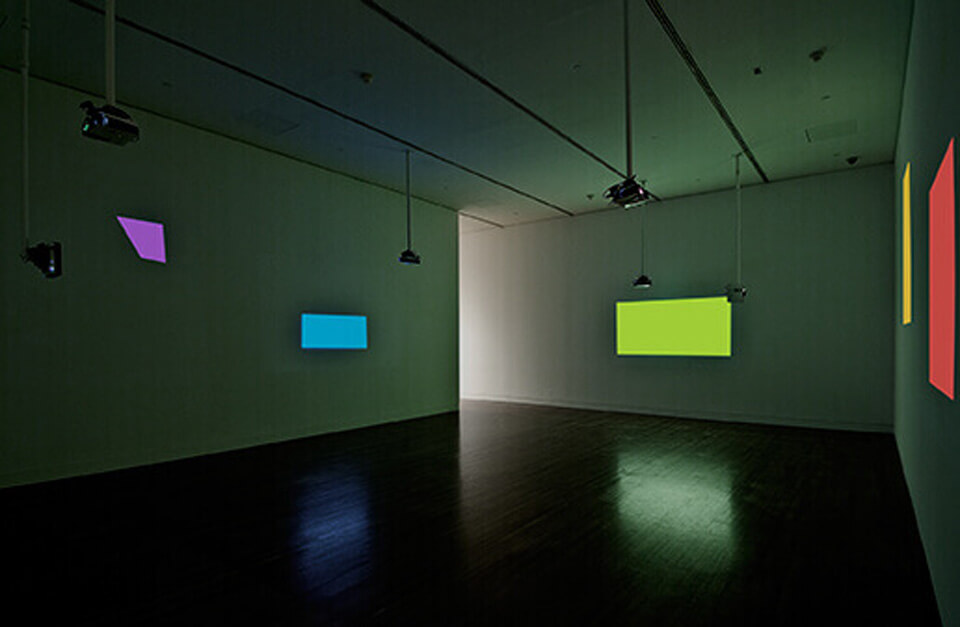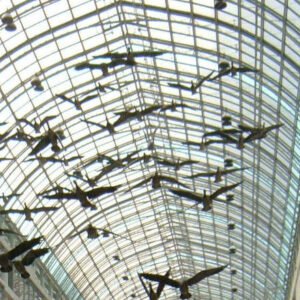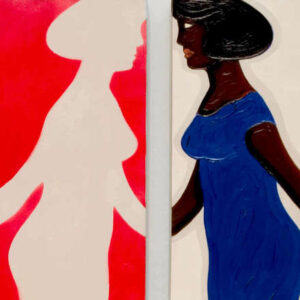The Viewing of Six New Works 2012

Michael Snow, The Viewing of Six New Works, 2012
Video installation, 6 looped video projections, colour, silent
National Gallery of Canada, Ottawa
A multi-channel video installation, The Viewing of Six New Works creates a gallery of moving abstraction. Each projection is a single-colour field of light, coming and going, stretching and contracting, performing for the spectator. The work can be considered in relation to Snow’s single-colour paintings of the early 1960s, such as Green in Green and Lac Clair, as well as works by younger painters that he admired, such as Ron Martin (b. 1943), originally from London, Ontario. But this comparison goes only so far. Attention to surface, as lavished by Martin and Snow the painter, is not the focus here. Rather the experience of viewing wakens memories of iconic artworks based on geometric forms. The ghost of the Suprematist Kazimir Malevich (1878–1935)—his desire to attain “the supremacy of pure feeling”—haunts Snow’s gallery, especially the Russian painter’s Red Square, 1915, in which the red patch is in fact slightly out of square with the canvas, thereby infused with contagious energy. Likewise with Snow’s pure colour light-forms whose shapes, generated by 3-D animation software, are continuously changing. Locating this work in an art gallery makes the point that even a static form, a painting or a sculpture, is an ephemeral experience. It is continuously changing in the perception of a living, breathing spectator. In this case the spectator is Snow himself. The Viewing of Six New Works was created with touchscreen-capture software that tracked and recorded his eye movements as he imagined looking at images on a wall.

How do we encounter those nonrepresentational geometric forms that, in the 1960s, came to be known as “primary structures”? The key has always been the position of the viewing body, knowing where to stand or where to sit. Snow first plays with this observation—it is serious play—in a film titled Side Seat Paintings Slides Sound Film, 1970, whose pretext is the late arrival of a spectator at an artist’s lecture about his work. The only remaining seat is off to the side, which means that the projected slide seems “distorted,” not playing square with the screen or the audience. Much more goes “wrong” over the course of this lecture, each misadventure underscoring the nature of this cinematic experience as a projection of coloured light, synchronized with recorded sound. The Viewing of Six New Works is silent, allowing conversations to take place in the spectator’s mind, conversations that illuminate much of contemporary art experience. As a spectator, how do I engage with a painting? These dynamic fields of light encourage the idea that the eye is constantly checking and tracing the perimeter, seeking to define a work by the relation of its edges to the core, which is itself continuously shifting. These are not paintings, of course, but other kinds of “new works.”

 About the Author
About the Author
 Download PDF
Download PDF
 Credits
Credits